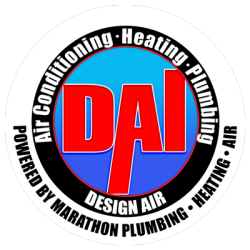Is it time to replace your furnace or air conditioning system? Building a new home, or upgrading your current residence? Or your business? Heat pumps are both heating and cooling systems, and energy star qualified efficiency models commonly cut space heating costs in half. There are also heat pump water heaters, but we won’t discuss that here.
Millions have already been installed across the United States, and with recent advancements you can forget about problems reported way back in the 1970s and ’80s. Those improvements include a choice of supplemental and back-up heating from propane, natural gas, or electricity.
How Do Heat Pumps Work?
They’re essentially air conditioning that works in reverse (https://energy.gov/energysaver/heat-pump-systems). In winter a evaporator coil — compressor — condenser coil loop moves heat from outside to inside, even when it’s cooler outdoors. In the summer the cycle reverses, moving heat from indoors to outdoors. So there’s no need for separate heating and cooling systems. You can learn more at http://home.howstuffworks.com/home-improvement/heating-and-cooling/heat-pump.htm
Leading brands (in alphabetical order) include Carrier, Lennox, Rheem, Trane, and York. Don’t already have duct work for a central heating or cooling system? No problems. Mini-split and split heat pumps are available for homes and businesses without air ducts.
Better Than “High-Efficiency!”
Today’s natural gas furnaces have energy efficiency ratings of around 80% and electric resistance heaters (including portable electric heaters and electric blankets) operate at essentially 100% efficiency ratings. So how can heat pumps do better?
Most are air-source heat pump technologies with indoor and outdoor coils much like window air conditioners. Rather than creating heat from the electrical energy they only have to move heat from one place to another. That way they typically consume only 1 watt-hour of electricity for every 8 watt-hours of equivalent heat energy (https://www.energystar.gov/products/heating_cooling/heat_pumps_air_source/key_product_criteria). High-performance models include special compressor features along with two-speed or variable speed fans. Even considering the much lower cost of natural gas they typically reduce space heating bills by 30-50% in mild climates. Geothermal heat pumps (also called ground-source or water-source) have even higher performance, and function in just about any climate and location.
An air-source heat pump’s energy efficiency falls as the temperature difference between outdoors and indoors rises, and many models can’t operate below 10 deg. F (although a few can go as low as -30 deg. F). So most models allow a choice of gas heat or electric heat as the supplemental heat source. Some even give you the option of using a heat pump or natural gas (or propane) modes based on temperatures and the relative costs of energy.
Product labeling gives you heating and cooling season performance numbers for comparison. But that’s under standardized conditions and varies significantly with climate. It’s important to have an expert size and select the right model. Because the evaporator and condenser swap functions it’s necessary to balance heating and cooling performance for the most economical operation. In most areas, this means a slight reduction in cooling efficiency. But you’ll always have enough heating and air conditioning.
Design Air for Energy Efficiency
We’re the area’s local experts in heat pump repair and installation. We’ll include energy costs and the local climate in our sizing and selection, make sure all components of the system are properly matched, and help you make the trade-offs between initial and operating costs. DesignAir is up to date on innovations such as scroll compressors and the latest gas-fired absorption technologies.
Our energy efficiency analysis can also help lower your utility bills by considering other options such as attic insulation, swamp coolers, and whole-house fans. We can also advise you on HERO financing options.

